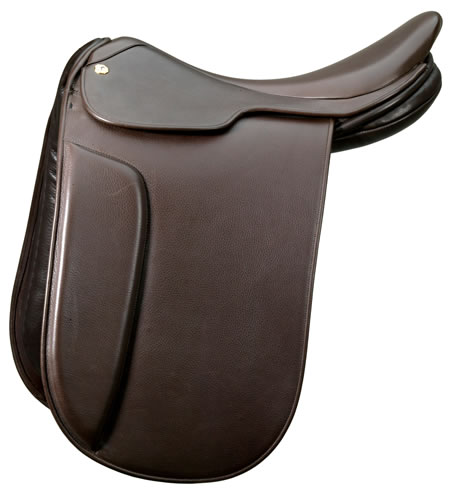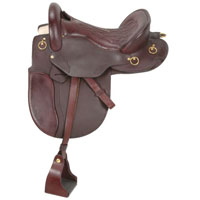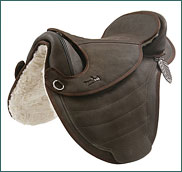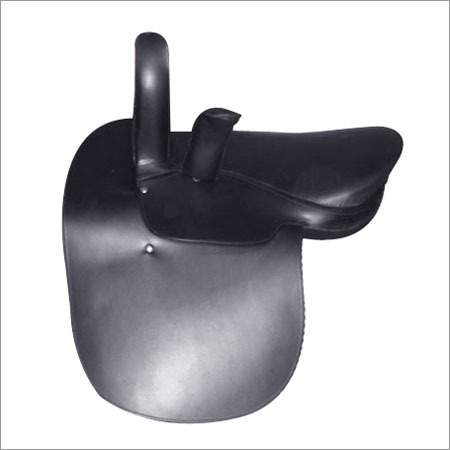| Home | First Posted May 19, 2009 Jan 21, 2020 | |
English Saddle Differencesby Debora JohnsonThere are many types of English saddles. There is much to consider when purchasing saddles. What you choose depends on what type of disciplines you and your horse enjoy. Do you compete in jumping, endurance, dressage, side saddle, or all purpose riding such as trail riding? Do you ride gaited horses with a park seat, flat seat or saddle seat in the English style? How is your horse's conformation? Does your horse have a large barrel or high withers? Is your horse thin? Does the saddle roll and slip because your horse has a withers that is not prominent? What is your figure or physique? You must consider not only your horse, but the rider, as well. Let's take a look at the different type of saddles and examine the differences. Having an understanding of why a saddle has specific features will help in the selection. Dressage Saddles

Jumping Saddles

All-Purpose Saddle
 "This type of English saddle is recommended for who prefer general/pleasure riding since they allow the rider the best of both worlds. They are very comfortable, secure and versatile. These saddles are also suitable for low-level show competitors since it permits the rider to enter various events without laying down the cash for multiple saddles. Once you go beyond amateur events you will want to strongly consider purchasing both a dressage saddle and/or a jumping saddle such that you can squeeze out every ounce of performance and efficiency. Remember that an all-purpose saddle is a jack-of-all-trades; you can use them for either type of event, but they will not function quite as well as one designed specifically for a particular event." Lane Fox Saddles

My husband, Bill, had a Trooper saddle custom made for his horse, Rusty. Rusty is a good size horse with a wide barrel and shorter coupling. He is a beauty. The Trooper sits up on two side runners (like pontoons on a water plane). This takes the rider and the saddle off the horse's spine. He puts a Tacky Pad underneath. Bill really likes this saddle and tells me that it is a very comfortable ride. I do not like anything that puts distance between my horse and myself. I like close contact. Endurance Saddles
 Endurance saddles come in English, Western and Australian stock saddles. They are made for distance riding of any kind. I have an endurance saddle (a Collegiate) and really like it. It is an English endurance saddle style--very comfortable--with a tilt and flaps that work well on the gaited horses. I can get behind the motion when gaiting and ride a balance seat when trotting or cantering. My horse is 5-gaited. Treeless Saddles
 I have a Barefoot Treeless Saddle of English design and love it. It is flexible, soft, very light (about 10 lbs) and adjusts to the horse's back in all directions. My treeless saddle moves with the horse rather than creating a barrier of a stiff tree. Horses move more relaxed and free because no tree is constricting the shoulder. No pressure under the cantle gives relief to short and flat backed horses. My saddle is stable on my horse's back. My saddle provides very close contact with my horse and helps horses and riders with back issues. Many riders find relief from pain because the saddles are so soft and cause less jarring to the rider's back. Beginner riders learn to feel the rhythm and find balance much faster. Treeless saddles are a popular training tool.
 |